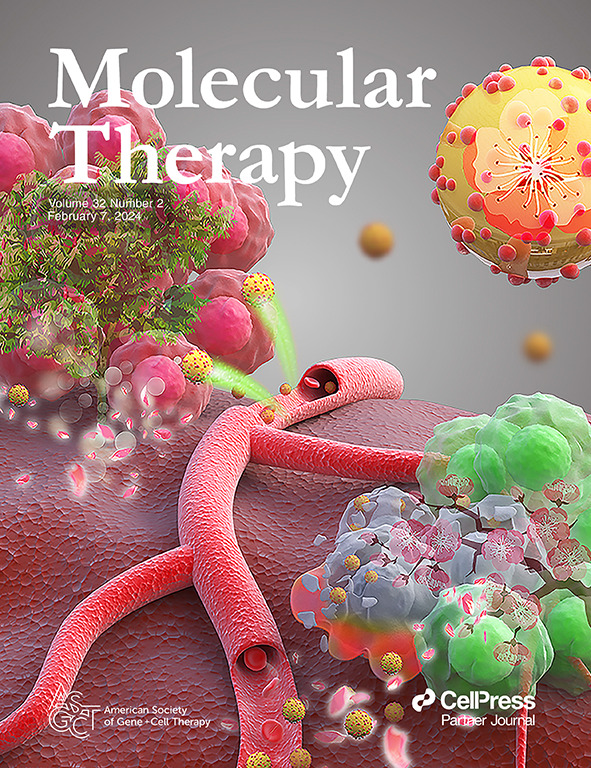aav介导基因治疗的临床应用现状。
IF 12.1
1区 医学
Q1 BIOTECHNOLOGY & APPLIED MICROBIOLOGY
引用次数: 0
摘要
目前,估计有8000种遗传疾病累积影响约10%的人口。即使在5%有治疗选择的遗传病患者中,这些治疗方法也很少针对疾病的根本原因,而是侧重于控制或改善症状,通常需要反复进行终身治疗。遗传疾病的治疗方法是在体内提供异常基因的功能拷贝,这是一种直观的解决方案,迄今为止已经花了三十年的时间才减少到临床实践,主要使用腺相关病毒(AAV)载体。在现有的病毒和非病毒基因传递方法中,AAV载体仍然是体内将DNA传递到细胞核的最有效手段。AAV载体现在构成了一个真正的新型治疗药物类别,由7种美国食品和药物批准的产品组成,临床开发的疾病适应症数量增加了十倍以上,并确定了一系列需要克服的问题,以实现广泛的临床应用。在这里,我们回顾了AAV基因治疗的临床进展,包括神经肌肉疾病、血友病、原发性心血管疾病或伴有心血管症状的疾病、溶酶体储存疾病、粘多糖疾病、原发性中枢神经系统疾病和眼部疾病。本文章由计算机程序翻译,如有差异,请以英文原文为准。
Current Clinical Applications of AAV-mediated Gene Therapy.
Currently, there are an estimated 8,000 genetic disorders that cumulatively affect approximately 10% of the population. Even among the 5% of patients with genetic disease that have treatment options, these therapeutics rarely address the underlying cause of disease but rather focus on managing or modifying symptoms and typically require recurrent, lifelong therapy. A therapeutic approach to genetic disease that in vivo delivers a functional copy of the aberrant gene is an intuitive solution that has thus far taken three decades to reduce to clinical practice, predominantly using adeno-associated viral (AAV) vectors. Among available viral and non-viral gene delivery approaches, AAV vectors remain the most efficient means for in vivo delivery of DNA to the nucleus. AAV vectors now constitute a bone fide novel therapeutic drug class comprised of 7 U.S. Food and Drug approved products with over tenfold more in clinical development for an expanding number of disease indications and an identified list of problems to overcome for widespread clinical application. Here, we review current progress in clinical AAV gene therapy, including for neuromuscular disorders, hemophilia, primary cardiovascular disorders or disorders with cardiovascular manifestations, lysosomal storage disorders, mucopolysaccharide disorders, primary central nervous systemic disorders, and ocular disorders.
求助全文
通过发布文献求助,成功后即可免费获取论文全文。
去求助
来源期刊

Molecular Therapy
医学-生物工程与应用微生物
CiteScore
19.20
自引率
3.20%
发文量
357
审稿时长
3 months
期刊介绍:
Molecular Therapy is the leading journal for research in gene transfer, vector development, stem cell manipulation, and therapeutic interventions. It covers a broad spectrum of topics including genetic and acquired disease correction, vaccine development, pre-clinical validation, safety/efficacy studies, and clinical trials. With a focus on advancing genetics, medicine, and biotechnology, Molecular Therapy publishes peer-reviewed research, reviews, and commentaries to showcase the latest advancements in the field. With an impressive impact factor of 12.4 in 2022, it continues to attract top-tier contributions.
 求助内容:
求助内容: 应助结果提醒方式:
应助结果提醒方式:


